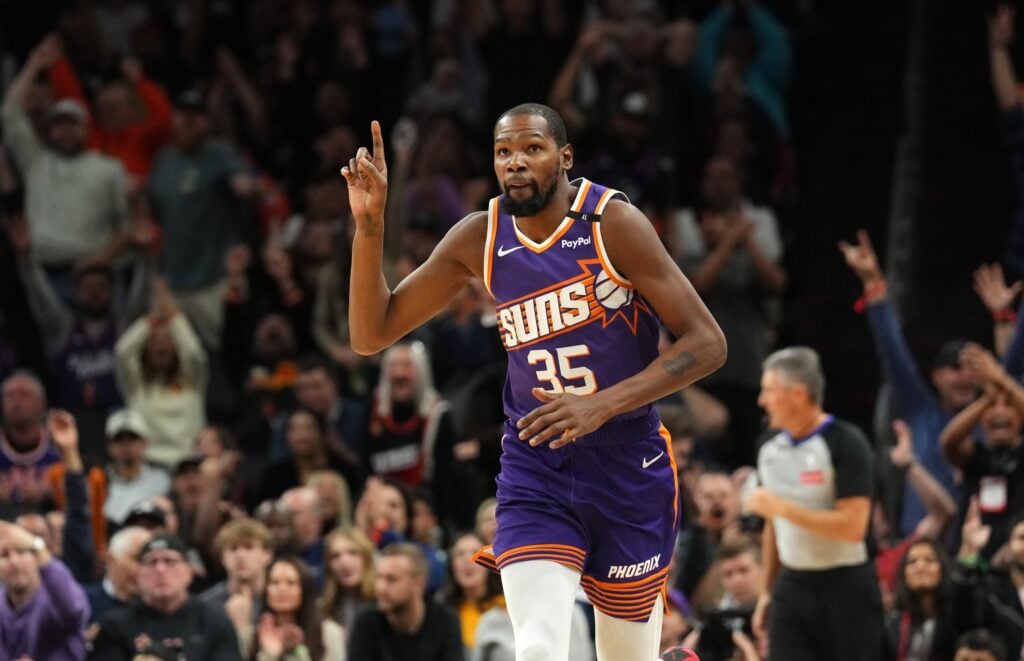MIAMI – The Miami Heat stand at a critical junction. As other Eastern Conference teams climb, the Heat’s grip on relevance loosens. With Tyrese Haliburton and Jayson Tatum sidelined due to Achilles injuries, the East is temporarily more vulnerable. Yet, Miami’s offseason strategy during this pivotal moment raises questions about the team’s long-term plans and Pat Riley’s future.
Pat Riley’s Future In Focus As Heat’s Offseason Strategy Revealed
The front office enters the NBA Draft holding the 20th overall pick, a remnant of February’s Jimmy Butler trade. The team lacks a second-round pick but may try to buy into the draft’s second half. However, under the new CBA, spending cash on a pick means triggering a hard cap at the second apron. It’s a restriction that could complicate an aggressive Heat offseason strategy.
Trade winds have swept the league. Desmond Bane is now in Orlando. Kevin Durant heads to Houston. The Celtics sent Jrue Holiday and Kristaps Porzingis out. Meanwhile, Miami watches.
Missed Opportunities and Reluctant Moves

Riley has stayed true to his blueprint. His legacy includes two championships and six NBA Finals appearances since 2009. His 2011 Executive of the Year award reflects the success of assembling LeBron James, Dwyane Wade, and Chris Bosh. Still, recent years have told a different story.
The Durant sweepstakes became a moment of reckoning. Miami had a real shot. According to ESPN’s Shams Charania, the Heat could have landed Durant without sacrificing Kel’el Ware:
“Essentially, he was left off the table in any conversation. That was a non-starter for them,” Charania said on The Pat McAfee Show.
Ware, a promising center, became the line Miami wouldn’t cross. They reportedly offered packages featuring Jaime Jaquez Jr., Nikola Jović, Haywood Highsmith, the No. 20 pick, and future swaps. But none included all of them at once. The Suns declined.
Instead, Durant went to the Rockets. The Suns preferred a package featuring starters like Jalen Green and Dillon Brooks, plus five second-round picks. “The Heat didn’t have players attractive enough to protect their farm,” Charania added.
Evaluating the Roster’s Ceiling
Miami’s core lacks the sparkle it once had. Terry Rozier’s scoring dropped sharply since arriving. Duncan Robinson’s trade value is limited. Andrew Wiggins, often floated in trade talks, doesn’t move the needle.
Miami’s young pieces—Jaquez Jr., Jović, and Highsmith—have potential, but little star cache. Highsmith averaged 6.5 points; Jaquez, 8.6; and Jović, 10.7. These are not numbers that headline packages for superstars.
Yet Riley resisted including more. Jake Fischer noted before the trade that Miami’s reluctance to deal Ware might decide Durant’s fate.
He was right. The Heat lost the bid.
Calculated Caution or Stubborn Strategy?
This hesitation speaks to a larger question: what is the true nature of the Heat’s offseason strategy?
Riley seems unwilling to mortgage the future, even for Durant. There’s logic in protecting prospects, but it’s not clear they’ll blossom into stars. Miami’s decision looks smart on paper—Durant is 36, and the deal could have aged poorly—but it also feels like a missed window.
One could argue the Heat are holding out for a better opportunity. Maybe for Giannis Antetokounmpo. But as of now, the Bucks show no signs of moving on. What’s the point of waiting for a deal that may probably never materialize?
If this was Miami’s best shot to improve significantly, and they passed, what exactly are they building toward?
The Heat have whiffed on acquisitions in recent years. They have missed out on big names like Damian Lillard, . They drafted Jovic at 27 ahead of Andrew Nembhard. Their last lottery pick was back in 2019 when they selected Tyler Herro with the 13th pick. The last time before that? Bam Adebayo at 14 in 2017. The team doesn’t draft in the lottery regularly despite being quite successful. This is a direct result of the team’s middling direction. Riley has been responsible for this direction.
Riley’s Legacy on the Line
At 80, Riley’s time may be nearing an end. If this year underwhelms, the franchise may begin preparing for a future without him. With $80 million in cap space projected for 2026, the Heat could reset.
But fans shouldn’t expect fireworks this summer. The front office seems focused on youth, internal growth, and avoiding bad contracts.
The Heat’s offseason strategy—calculated, conservative, and cautious—may offer a stable floor. But does it offer a ceiling high enough for real contention?
As the East changes rapidly, the spotlight now falls on Riley. His choices, more than ever, define the franchise’s direction.
© Jim Rassol-Imagn Images
The post Pat Riley’s Future In Focus As Heat’s Offseason Strategy Revealed appeared first on Last Word On Basketball.
